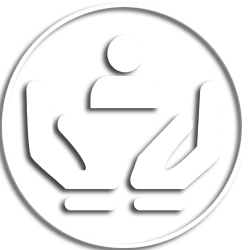Purchasing homeowners insurance in 2025 demands careful consideration amid shifting market dynamics and evolving risks. Beyond simply protecting your property, the right policy secures your financial future in case of disasters ranging from fires to floods. Buyers must navigate new regulatory requirements, insurer stability, and coverage nuances to ensure comprehensive protection. Understanding lender mandates, coverage options, and cost-saving strategies reveals how to wisely invest in your home’s safety and your peace of mind.
How Mortgage Requirements Shape Homeowners Insurance Choices in 2025
Mortgage lenders continue to play a pivotal role in homeowners insurance decisions. Nearly all financiers require insurance coverage to safeguard their investment, integrating payment management via escrow accounts or direct billing. This ensures continuous protection and smooth claims processes.
Key mortgage-insurance considerations include:
- Escrow accounts: Many lenders bundle insurance and property tax payments into monthly mortgage payments for convenience and budget management.
- Down payment influence: Borrowers with less than 20% down often must maintain escrow, while those with larger down payments may opt out but may face higher interest rates.
- Payment flexibility: Without escrow, homeowners pay premiums directly and might incur installment fees for quarterly or monthly billing.
- Upfront payment demands: In some cases, insurers or lenders require full annual premium payments upfront, influencing cash flow planning.
Understanding these aspects upfront prevents surprises and helps align your insurance with mortgage terms efficiently.
What Does Homeowners Insurance Cover? A Guide for First-Time Buyers
Many first-time homeowners underestimate the complexity of coverage. In 2025, a standard homeowners insurance policy typically includes protection for your dwelling, belongings, liability risks, and additional living expenses. Yet, nuances and optional coverages warrant careful evaluation to suit individual circumstances.
Core policy coverages consist of:
- Dwelling coverage: Covers rebuilding costs after damage from perils like fire, lightning, or tornado, not including exclusions such as floods.
- Personal property coverage: Protects belongings such as furniture, electronics, and clothing from damage or theft, often covering 50-70% of dwelling coverage, with options to expand.
- Liability insurance: Offers defense and settlement funds if you or household members cause injury or property damage, crucial to guard your financial assets.
- Medical payments to others: Small coverage amounts pay for minor injuries guests suffer on your property, expediting settlement without legal conflict.
- Additional living expenses: Pays extra costs if you temporarily cannot live in your home due to covered losses, covering hotels, meals, and services.
Evaluating these elements carefully ensures robust protection tailored to your home and lifestyle.
Choosing the Best Homeowners Insurance Provider in 2025
Selecting a reliable insurer involves more than just price shopping. The financial health and customer service quality of companies like State Farm, Allstate, Geico, Progressive, and Liberty Mutual must factor heavily in your decision.
Consider these criteria when comparing providers:
- Company financial strength: Ratings from agencies like Standard & Poor’s or AM Best signal the insurer’s ability to pay claims reliably.
- Coverage options and flexibility: Look for customizable coverage limits and add-ons to meet your specific needs.
- Discount opportunities: Bundling home and auto insurance (e.g., with Farmers Insurance or USAA) can reduce premiums significantly.
- Customer satisfaction and claims handling: Customer reviews and third-party surveys offer insights into insurer responsiveness and service quality.
- Availability of special coverages: Check providers like Nationwide, Travelers, and Hartford for offerings such as natural disaster or umbrella policies.
Choosing wisely now sets a foundation for smooth claims and peace of mind.
Maximizing Coverage: Determining Adequate Limits and Optional Protections
Simply accepting default insurance limits can leave gaps in protection. In 2025, prudent homeowners seek options like extended or guaranteed replacement cost coverage to ensure full rebuilding after destruction. Such policies cover costs exceeding the standard limit, reflecting real-world price inflation in materials and labor.
Key coverage enhancements to consider:
- Guaranteed replacement cost: Pays full rebuilding costs regardless of limits listed in the policy.
- Extended replacement cost: Covers an additional set percentage (often 25%) above the dwelling coverage limit.
- Additional personal property coverage: For high-value items like jewelry, artwork, or instruments beyond usual limits.
- Disaster-specific insurance: Flood, earthquake, or sinkhole insurance tailored for high-risk zones — often required by lenders.
- Water backup coverage: Protects against damage from sewer backups and sump pump failures.
- Umbrella liability insurance: Extends liability limits significantly to protect assets from large lawsuits.
Augmenting your policy based on local risks and personal assets is an essential step for comprehensive security.
Purchasing home insurance can be daunting, but a structured approach in 2025 simplifies the experience:
- Start early: Contact insurers once you identify your new home to allow paperwork and inspections.
- Conduct a home inventory: Document belongings to determine appropriate personal property coverage.
- Shop multiple quotes: Compare policies from well-rated companies such as Geico or State Farm to find competitive prices and coverage.
- Review policy exclusions: Understand what perils are not covered to plan for additional insurance if necessary.
- Bundle policies: Leverage discounts by insuring your car and home with providers like Progressive or Farmers Insurance.
- Consult experts: Work with agents or trusted sources to clarify doubts before finalizing.
This strategic process controls costs while maximizing protection tailored to your homeownership goals.
Frequently Asked Questions About Homeowners Insurance for New Buyers
- Do I need to buy homeowners insurance if I have a mortgage?
Yes, mortgage lenders typically require homeowners insurance to protect their investment, ensuring funds are available for repairs or rebuilding after covered losses.
- How can I find affordable homeowners insurance?
Shopping multiple insurers, bundling policies, and improving home safety features can lower premiums. Checking discounts with top companies like USAA and Liberty Mutual also helps reduce costs.
- Is condo insurance different from standard homeowners insurance?
Condo insurance focuses on your unit’s interior, personal belongings, and liability, while the homeowners association covers common areas. Mortgage lenders for condos also generally require this specific insurance.
- What is extended replacement cost coverage?
It’s an insurance option that pays to rebuild your home beyond your policy limit by a fixed percentage, accounting for unexpected increases in reconstruction costs.
- Can I avoid escrow and pay insurance premiums myself?
Depending on your lender and down payment, you may opt out of escrow, but often with higher interest rates or the responsibility to manage payments directly.


